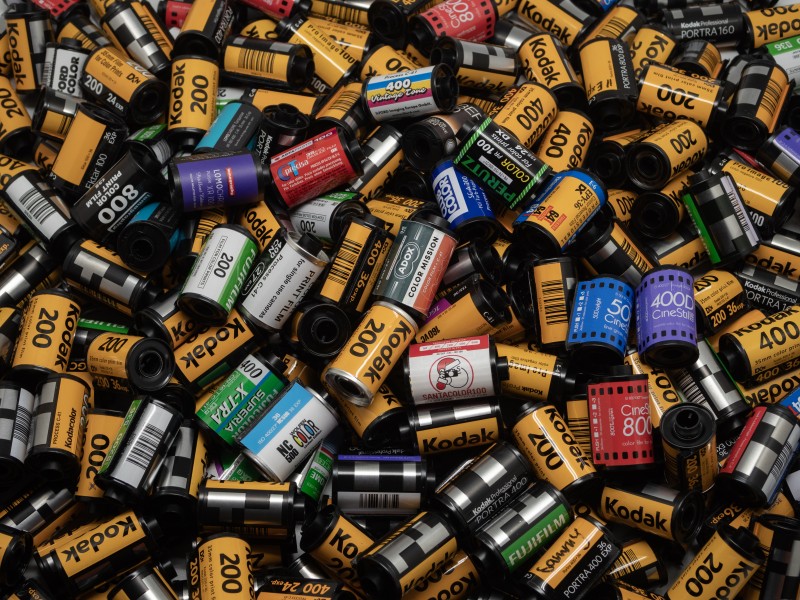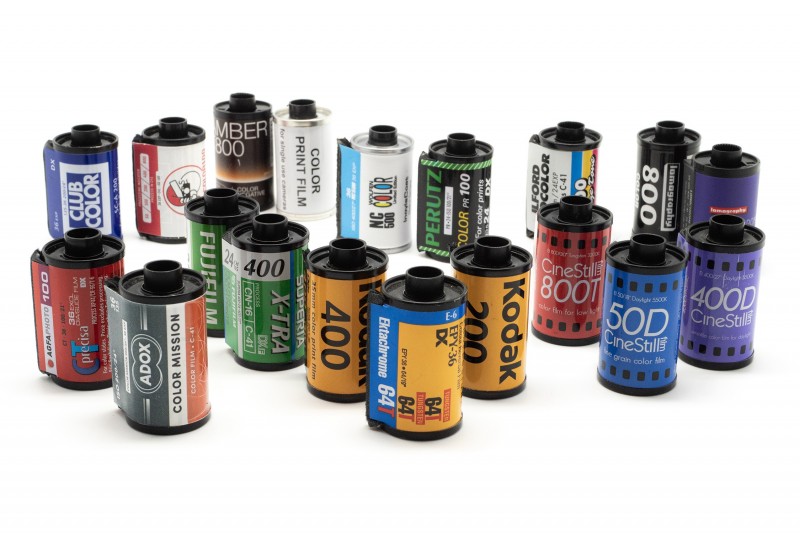A valuable asset
A valuable asset
April 23, 2024

The demand for film is stable, but does not compare to the volume of the nineties
Even where the Kodak brand is not visible, it is mostly Kodak on the inside. Following Agfa's bankruptcy, only a few casting machines remained, and Fujifilm in Japan now focuses more on the instant film market, leaving the production of the colour film for the C41 process to be carried out by Kodak in the USA.
Kodak clearly leads the current availability, followed by other familiar names such as Adox in Berlin, Film Ferrania in Italy, and Harman in the United Kingdom, who have also ventured into colour film. In addition, a number of companies have entered the market by buying and selling leftover stocks of photo and cinema film; either as is or cleverly pre-exposed.
Considering the situation described, many analogue photographers have noticed the increase in the price for colour film. This perception is naturally influenced by the limited availability of such film. Furthermore, many base their price assessment on the costs at a time when analogue photography was thought to be dying out and digital photography was on the rise; consequently colour film was being sold off at heavily discounted prices. Ludwig Hagelstein challenged this view for the magazine SilvergrainClassics, and reached a very different conclusion: prices have 'normalized' following the described circumstances. Now, it is no longer just a question of surviving amid the competition, whatever the cost, but rather of adopting a long-term perspective for a revitalized analogue film market. “In the film industry, analogue film is more popular than even,” Hagelstein confirms. “This applies to fashion and music video productions, as film creates a certain look that allows a production to stand out against its competitors.” Among young analogue photographers, themes of deceleration and a more conscious approach to photography, have instigated the deliberate choice for film.
Hagelstein explains that the high cost of film is due to the fact that producing modern colour film is a high-tech process, comparable to semiconductor manufacturing but even more complex. “It is one of the most complex chemical and industrial manufacturing processes ever developed.”
Or as Mirko Böddecker, founder of von Adox and Fotoimpex in Berlin, put it so succinctly during an interview with LFI about the future of colour film in Europe: “Manufacturing colour film is seriously like rocket science.” “When the demand for film peaked in 2000, it was backed by billions of dollars spent on research and development, and more than a hundred years of research work by some of the brightest minds of their generations,” Hagelstein remembers. “The film manufacturing process is so complex that, even at the height of its development, only four companies worldwide were capable of producing a colour film that met the highest quality standards: Eastman Kodak, Agfa-Gevaert, Konica, and Fujifilm. Furthermore, film is not just a complex product; it also requires many resources, the procurement of which is becoming increasingly challenging and/or expensive, or needs to be revised due to legitimate environmental concerns.” Compared to the enormous production figures of the nineties, when, due to the sheer volume, Kodak and Fujifilm could cost-effectively produce or purchase the materials they needed, today we must face new realities. “The same machines that produced billions of kilometres of film cannot operate efficiently on the smaller scale required for today's stable but smaller market,” Hagelstein explains. A sober price comparison, considering increased production costs and purchasing power, ultimately lead him to conclude that film has only experienced a reasonable, justifiable price increase. Now, it is up to the film-manufacturing industry to produce economically enough to meet the market's needs, without stifling the enthusiasm of those who support it.

The demand for film is stable, but does not compare to the volume of the nineties

At a first glance, the cartridge on the outside does not always reveal the origin of the film inside